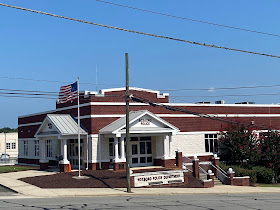When Sen. Tammy Baldwin kicked her reelection campaign into high gear last November with a “One Year to Win” tour of her state, the first place she headed was this agricultural town in south-central Wisconsin, where she cut the ribbon to open a new local Democratic headquarters.
Richland was one of 17 such Trump-to-Baldwin counties in the state, which suggests there are still some parts of the country where ticket-splitting has not gone entirely extinct.
I've written a bit in recent years about the strategy of showing up everywhere.
Then, there's Baldwin's play on the outsider status of her opponent, Hovde:
Baldwin rarely misses an opportunity to remind voters that a magazine honored her Republican challenger, Eric Hovde, as one of Orange County’s “most influential people” for three years in a row.
“Well, Wisconsin, we have a Green County. We have a Brown County. There’s no Orange County in Wisconsin,” Baldwin said.
The two made campaign stops over the weekend here in south-central Wisconsin, in a pair of rural counties that reliably voted for Donald J. Trump in 2016 and 2020.
As Democrats have faced eroding support from working-class voters in rural areas, the party has begun to lean on messengers like Mr. Shapiro and Gov. Tim Walz of Minnesota, now the vice-presidential nominee, who have proved their ability to appeal to voters in more conservative areas. A handout at the Democratic offices here for volunteers speaking with voters stressed that Mr. Walz is a “lifelong hunter and gun owner” and “believes in Midwest common sense, being a good neighbor and allegiance to the U.S. of America.”
The story takes up Baldwin's changed circumstances in that she is now facing an election in which Trump is also on the ballot. Last time she was elected was 2018, when Trump was the sitting president.
Here's a post from earlier this month based on a Wall Street Journal story suggesting that Baldwin has the touch with her state's rural voters.
And here's another Wisconsin story, this one less focused on the 2024 Election and focused instead on small-town attitudes about immigration. It's by Jose Del Real, and the dateline is Baraboo, population 12,566. An excerpt follows:
The refugees were headed to a city 150 miles away, but the public uproar over their imminent arrival quickly migrated across county lines, down the lush rural roads of south-central Wisconsin and here into the quiet town of Baraboo where Eleanor Vita had recently retired. She set out to research the matter herself, which was how, within the dull depths of government reports about resettlement, she found what she believed was proof of dishonesty about the cost of the program.
* * *
Across the country, disagreements about immigration policy are still at the heart of politics eight years after Donald Trump’s first presidential campaign, which was propelled by warnings about foreigners bringing drugs and violence into the United States. It was persuasive rhetoric that year for many in Wisconsin, a state once seen as a Democratic bulwark but which had come to swing between political parties on vanishingly thin vote margins.
The same was true of Sauk County, a rural area northwest of Madison, where 93 percent of residents are White, about 1 in 5 have college degrees and a growing number are over 65 years old. Like Wisconsin itself, Sauk County went twice for Barack Obama, then for Trump in 2016, then for Joe Biden in 2020. This is a swing county in a swing state.
Looking forward to seeing what happens in Wisconsin next month.











